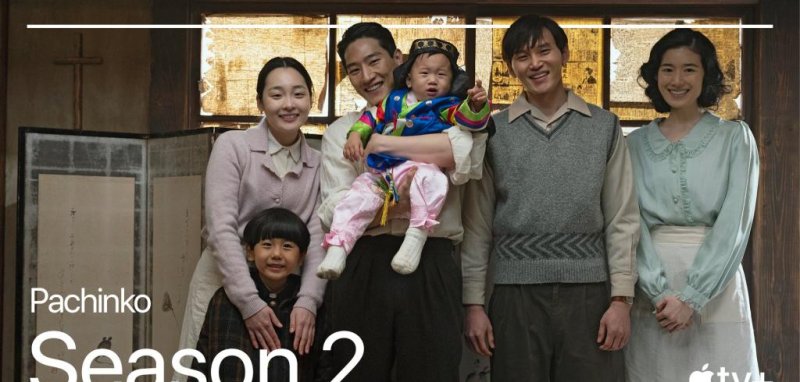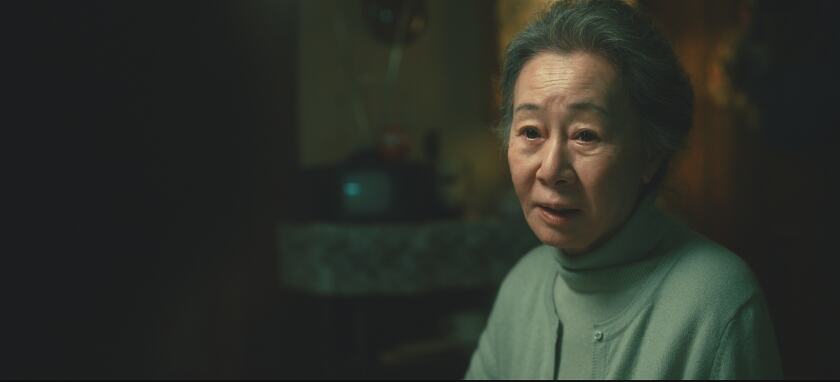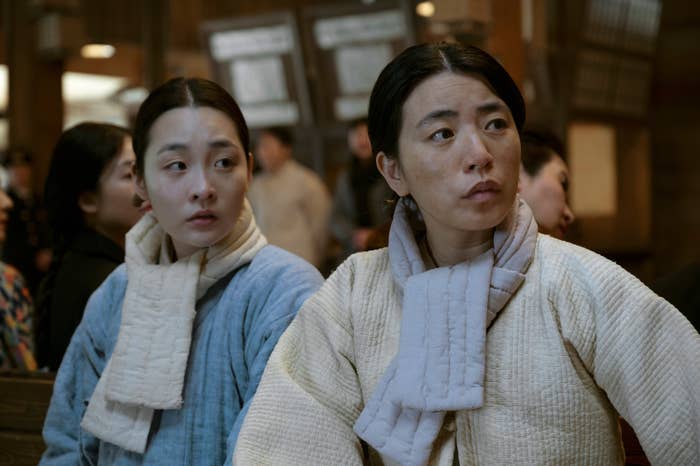When Min Jin Lee’s finest novel, ‘Pachinko’, was published in 2017, it was acclaimed as a sprawling historical epic encompassing a prosperous period of contemporary East Asian heritage. It travels through colonial Korea, WWII, the joint colonisation of Japan, the Korean War, and Japan’s Wall Street Era — all through the lens of one family. The so-called Zainichi — Koreans, who were often forced to flee their nation after losing their vocations due to colonial oppression, ended up as displaced, worried second-class immigrants in Japan.
This adaption on Apple TV+ depicts a Korea you would not have gotten via Squid Game or K-pop. The mini-series, grand in scope and personal in tone, chronicles the aspirations and goals of four generations of a Korean immigrant family. The narrative begins with forbidden love and builds into a sprawling saga that travels through Korea, Japan, and America — telling an extraordinary story of war, peace, love, loss, victory, and reckoning through our powerful protagonist Sunja.
Also read: Korean Dramas: Deconstructing Masculinities, Constructing Gender Stereotypes
Colonialism, a catalyst for circumstance
“They took our land, our rice, vegetables, and fish,” a fisherman grumbled to his buddies over a drink. He further says, “To smash a soldier’s head with a rock in my palm, to warm my chilly hands with his blood! It’s enough to know that there’s one fewer cockroach roaming our country. That would make me happy!” His friends get worried. Such rash behaviour might cost them their lives. This incident is shown to take place in the Korean village of Yeongdo under Japanese colonialism.
The aftermath of this deception showcases how war costs womanhood differently than men and how when she finds love in Hansu, the baggage of his secret life controls her future evermore as she conceives a baby with him. Hansu is depicted to conclude that the only way to live like a Korean under Japanese authority was to pretend to be one of them.
Pachinko begins on a picturesque dock market, marred by Japanese officers right out of the textbook of vicious reprobates. They insult Sunja’s compassionate, cleft-lipped, father — who does not betray his fisherman pal to these thuggish conquerors. Sunja is the one who demands the unfortunate fisherman leave town.” I’m a man who no longer understands how to survive in the world,” he tells the little girl in the inaugural episode’s most moving phrase. We then transition to 1989 Osaka, where Sunja, now a cherished grandmother reclining on the porch, recalls this time with nostalgia.
The benefit of this scaling back and forth is that it reinforces the show’s characters’ sensation of being cursed. “There is a curse in my blood,” Sunja’s mother declares at the getgo: all three of her sons died in their first year, and she thinks the daughter will die as well. Later, our intoxicated fisherman expresses concern, “It’s too much, living with this hatred. Our children will be cursed. Will this ever end?“

What is tragic is that the characters allude to their fate as a generational curse, but it is through the epic scale of the series that we realise that an entire country under a colonial curse can deter and dislocate its people’s futures and permanently scar immigrant families, such as Sunja’s.
The show thus develops a rhythm that the book lacks due to its continual moving between time frames. It creates exciting, dramatic analogies navigating from colonial Korea to a contemporary one, such as the divinatory opening scene, which combines multiple visuals. It shows Sunja’s mother visiting a fortune-teller to talk about conceiving in 1915 with a visual of Solomon, her great-grandson speaking English, at a business conference in New York in 1989.
Also read: Analysing The Success Of The Female Gaze In K-dramas
Women’s choices and their costs
The eclectic orchestral score acts elemental to the setting of Colonial Korea and draws vitality to the intimate lives of women such as Sunja. Her life in the southern fishing town of Yeongdo is relatively stable but is thrown into turmoil when she becomes pregnant with the child of charismatic market broker Koh Hansu, whose ardent courting of her masks his identity as a married man living in Japan. The aftermath of this deception showcases how war costs womanhood differently than men and how when she finds love in Hansu, the baggage of his secret life controls her future evermore as she conceives a baby with him. Hansu is depicted to conclude that the only way to live like a Korean under Japanese authority was to pretend to be one of them.
What is tragic is that the characters allude to their fate as a generational curse, but it is through the epic scale of the series that we realise that an entire country under a colonial curse can deter and dislocate its people’s futures and permanently scar immigrant families, such as Sunja’s.
Like many other characters in the series, Hansu dupes himself into thinking that social advancement can only be acquired through conciliation. The unlawful romance with Sunja does not affect his reputation or job, as he manages to lurk in her life for the rest of her life. Sunja, however, is accosted with shame in the patriarchal setting and is supported by her mother to marry a pastor and then immigrate to Japan. Her choices are driven by survival, but unlike Hansu, Sunja’s non-conciliation of Korean culture — her mother’s recipe for Korean Kimchi is what helps her earn a living in Japan.

Later, Solomon uses his grandma as a bargaining chip in his attempts to persuade another expat Korean lady to sell her prime home to his business. Sunja, who is now old, is practically in tears after one scoop of rice, which she serves them. Sunja informs Solomon that she has just been whisked back to her motherland, and what they’ve been served is Korean rice, which is nuttier and crispier. This instance reminds us of her mother and the risk she took to buy white rice in the imperial land. White rice was then considered a luxury; now, it is served with every meal. It’s no surprise Solomon doesn’t comprehend her grandmother’s sentiments; as he was transported to America as a teenager, a privilege made possible by his elders’ sacrifices.
Throughout the show, you feel empathetic toward Sunja as she seems to be in contradictions about the future of her family rooted in the colonial curse. In an effort to aid Solomon in maintaining his identity and reaffirm his Korean culture, she advises him that he is better off in the United States. Her choices are driven to salvage them as outcasts in Japan, but it only makes her family face their distorted identities. As an old lady, she now buys Kimchi jars and recalls how the art of making them was deemed to be her only means to survive.

Sunja saw two alternatives: live in disrepute, although sumptuously, in Korea or proudly in Japan, even if it means selling kimchi to live. And she never sees her family again since she chose to follow the idealistic pastor husband to Japan. Sunja’s choice demonstrates that women can resist and live through adversity. She also exhibits women’s estimation and regards for their own value. Sunja’s complete unwillingness to be Hansu’s mistress, despite her love for him, exemplifies this.
Though Sunja feels she made the correct decision, she is haunted by memories of a pre-commercialised Korea evoked by the series’ fated paradigm, which highlights the immensity and splendour of the densely wooded Korean island. She is later inspired to return to Korea for the first time since her departure in the 1930s by the death of her sister-in-law.
What does the game of Pachinko symbolise?
‘Pachinko’ is a game of chance that is employed as a gambling machine. The pachinko machine was created in Japan during the twentieth century and is commonly found in gaming parlours. The pachinko/pinball game industry in Japan is also a multibillion-dollar sector that is crucial to the Japanese economy. Many Korean families like Sunja’s got associated with this game in order to earn a livelihood there.

The family in the show centrally represents Koreans in Japan who are involved in the pachinko business in order to provide a better life for themselves. However, that was not the underlying rationale for selecting Pachinko as the title. This pinball game needs skill and mostly luck. The term ‘Pachinko’ is hence a symbol for both luck and trust. It portrays the characters in a way that reflects their ability to overcome their situation.
On the other hand, like a game of chance that is frequently manipulated in ways that players are unaware of, it is also a metaphor for how the decisions made by Sunja affect future generations. Similarly, there are forces at work in the tale that the characters aren’t always aware of and influence their destiny.
Pachinko thus emphasises storytelling, stories from the past, and the desire to tell them, as sometimes it is the only asset that the older generations have. This is a trope that the show expands on in its moving conclusion, which I won’t ruin here.




